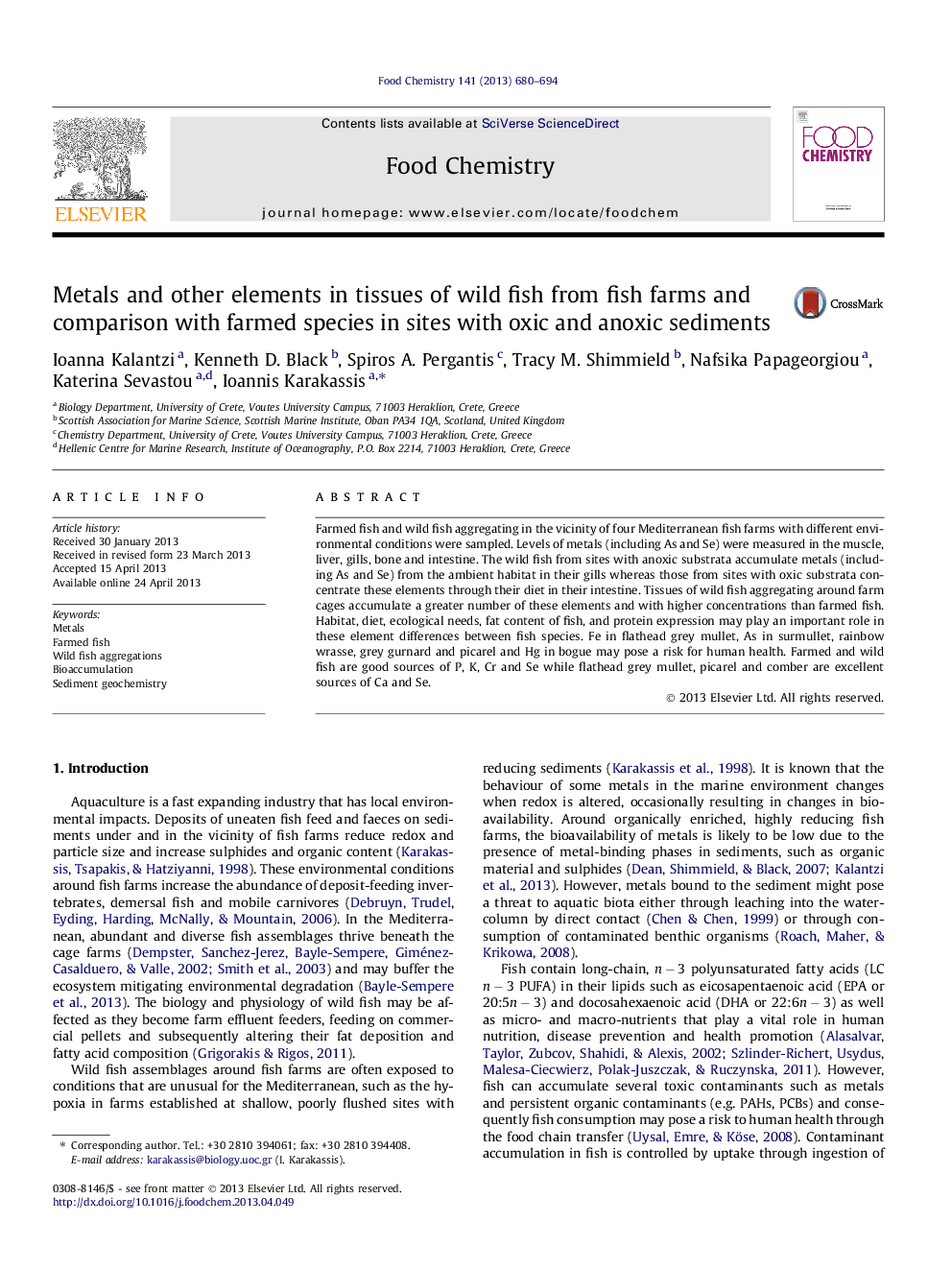| Article ID | Journal | Published Year | Pages | File Type |
|---|---|---|---|---|
| 1187096 | Food Chemistry | 2013 | 15 Pages |
•Metals (plus As, Se) in farmed and wild fish tissues were studied in 4 fish farms.•Wild fish accumulate metals from habitat in anoxic sites and diet in oxic ones.•Wild fish accumulate more metals and with higher values than farmed ones.•Consumption of some wild fish may pose risk to humans due to elevated Fe, As & Hg.
Farmed fish and wild fish aggregating in the vicinity of four Mediterranean fish farms with different environmental conditions were sampled. Levels of metals (including As and Se) were measured in the muscle, liver, gills, bone and intestine. The wild fish from sites with anoxic substrata accumulate metals (including As and Se) from the ambient habitat in their gills whereas those from sites with oxic substrata concentrate these elements through their diet in their intestine. Tissues of wild fish aggregating around farm cages accumulate a greater number of these elements and with higher concentrations than farmed fish. Habitat, diet, ecological needs, fat content of fish, and protein expression may play an important role in these element differences between fish species. Fe in flathead grey mullet, As in surmullet, rainbow wrasse, grey gurnard and picarel and Hg in bogue may pose a risk for human health. Farmed and wild fish are good sources of P, K, Cr and Se while flathead grey mullet, picarel and comber are excellent sources of Ca and Se.
